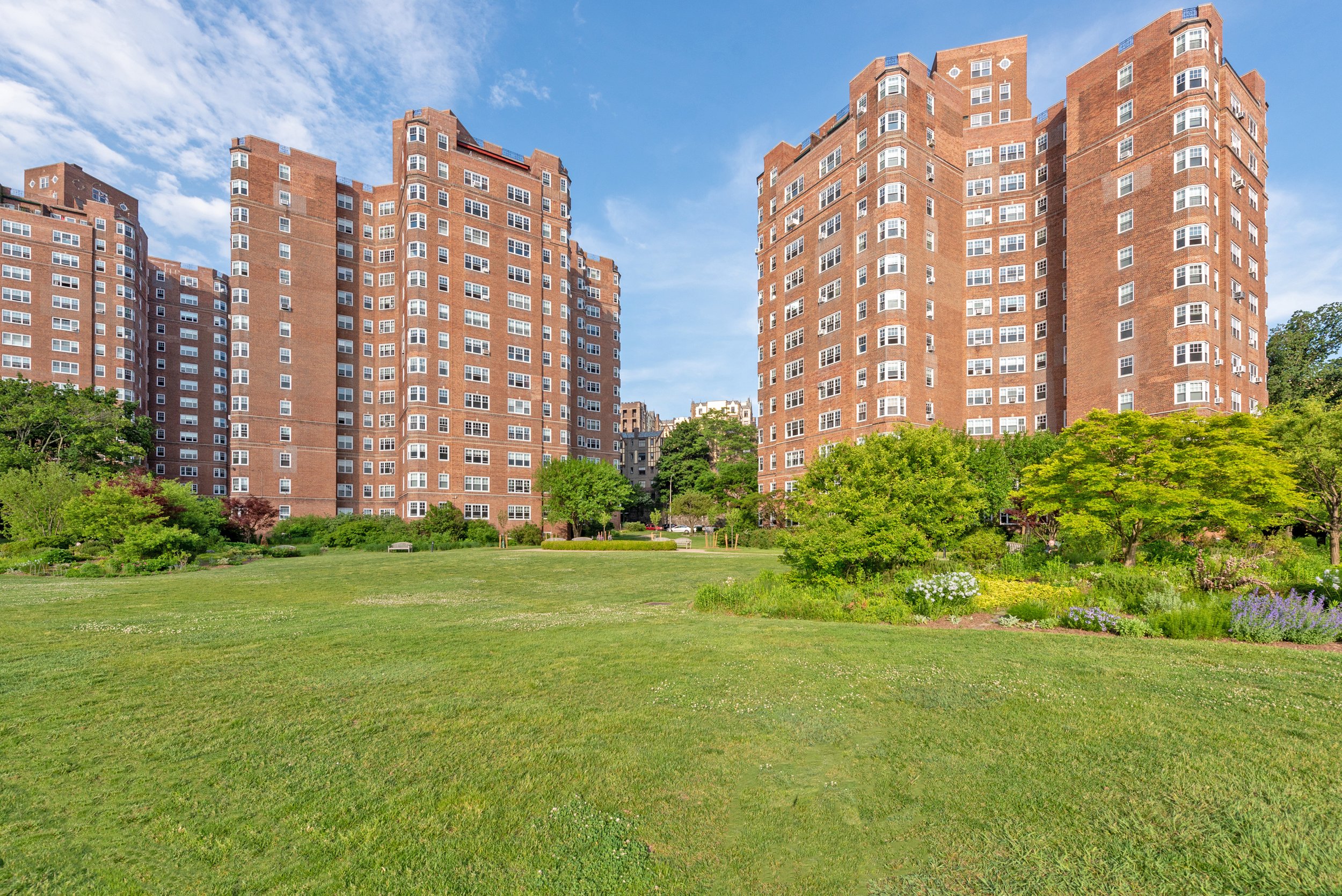Castle Village
+ LOCATION
Cabrini Boulevard, New York, NY
+ TYPE
Restoration
+ BUDGET
$2,455,000
+ OWNER
Castle Village Owners Corp.
+ AGENT
Goodstein Management
This ca. 1938 five-tower residential complex is a beautiful example of early 20th-century architecture. The buildings are constructed with concrete frames and fully bonded brick walls, with ornamental cast stone detailing and terra cotta block backup. Over time, the complex suffered from wear and tear, resulting in damage to the masonry walls, lintels, and sills, as well as deterioration of the cast stone.
Our team has led a multi-year restoration project that included masonry restoration, lintel and sill replacement, terrace roof and parapet rebuilding, and an extensive waterproofing program. We replaced the copper standing seam roofs, which were no longer functioning as intended, and ensured that the new roofs were properly installed and insulated to prevent water damage.
The buildings are located on a steep hill, whose dramatic grade change even results in some apartments being located below the entrance level but still enjoying a view over the Hudson River. The slope also results in a different configuration at each building’s entrance. Each building’s main entrance was reconfigured to introduce a wheelchair-accessible entrance approach. At four of the buildings this was achieved through a regrading of the walkways approaching the main entrance portico, adjusting the available slopes to level the pavement with the quarter-circle brick and stone stoops, which were themselves rebuilt. At the fifth building, the highest stoop received a rebuilt curved stair and a new glass-enclosed vertical wheelchair platform lift built into a new recess in the stoop and its rebuilt curved brick parapet wall. Thanks to the dramatic grade change and varying depth of bedrock, the cast-in-place concrete pit for the new lift is supported directly on the bedrock which is about 12 feet below grade at this particular location.
We also undertook the challenging task of replacing deteriorated cast stone elements, which required careful matching of the original design and materials. This was essential to ensure that the new cast stone elements would blend seamlessly with the original elements, preserving the overall appearance and character of the complex.




